
Fig. Represent vertical sections of four wings moving horizontally in air. In which case the force is upwards
A. 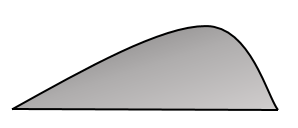
B. 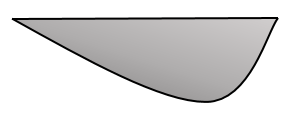
C. 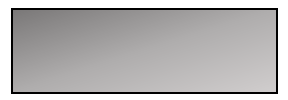
D. 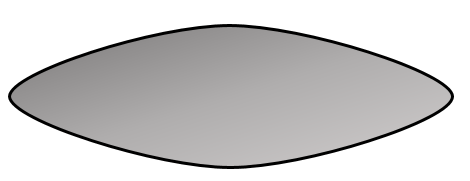
Answer
216.6k+ views
Hint: The force acting normal to the surface is the product of the pressure and the area of the surface. The net force acts in the direction of the force with larger magnitude if two forces are acting in opposite directions.
Complete step by step solution:
The force on the wing will act vertically upward if the force acting upward is greater than the force acting downward. As the thickness of the wing is insignificant to consider the pressure variation due to atmospheric air with height, so the pressure acting above the wing is assumed to be equal to the pressure below the wing.
For the first shape of wing,
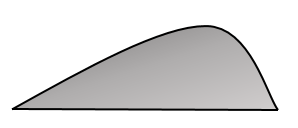
The effective area of the upper portion of the wing is less than the area below the wing. So, the force acting on the upper portion in the downward direction is less than the force acting on the lower portion in upward direction. Hence, the net force acting on the wing is in upward direction.
For the second shape of wing,
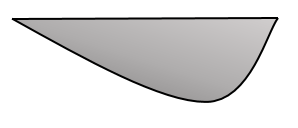
The effective area of the lower portion of the wing is less than the area of the upper portion of the wing. So, the force acting on the upper portion in the downward direction is greater than the force acting on the lower portion in upward direction. Hence, the net force acting on the wing is in downward direction.
For the third shape of wing,
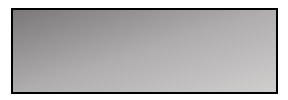
The effective area of the lower portion of the wing is equal to the area of the upper portion of the wing. So, the force acting on the upper portion in downward direction is equal to the force acting on the lower portion in upward direction. Hence, the net force acting on the wing is zero.
For the fourth shape of wing,
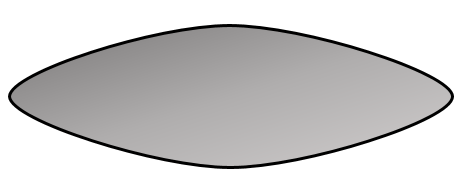
The effective area of the lower portion of the wing is equal to the area of the upper portion of the wing. So, the force acting on the upper portion in downward direction is equal to the force acting on the lower portion in upward direction. Hence, the net force acting on the wing is zero.
Therefore, the correct option is A.
Note: The net upward force on the wing is so that it balances the weight of the aircraft so that it moves horizontally. Moreover, wings are airfoils that provide lift when they are moved quickly through the air. They come in a variety of sizes and forms. Different wing designs might offer specific desirable flying characteristics.
Complete step by step solution:
The force on the wing will act vertically upward if the force acting upward is greater than the force acting downward. As the thickness of the wing is insignificant to consider the pressure variation due to atmospheric air with height, so the pressure acting above the wing is assumed to be equal to the pressure below the wing.
For the first shape of wing,

The effective area of the upper portion of the wing is less than the area below the wing. So, the force acting on the upper portion in the downward direction is less than the force acting on the lower portion in upward direction. Hence, the net force acting on the wing is in upward direction.
For the second shape of wing,

The effective area of the lower portion of the wing is less than the area of the upper portion of the wing. So, the force acting on the upper portion in the downward direction is greater than the force acting on the lower portion in upward direction. Hence, the net force acting on the wing is in downward direction.
For the third shape of wing,

The effective area of the lower portion of the wing is equal to the area of the upper portion of the wing. So, the force acting on the upper portion in downward direction is equal to the force acting on the lower portion in upward direction. Hence, the net force acting on the wing is zero.
For the fourth shape of wing,

The effective area of the lower portion of the wing is equal to the area of the upper portion of the wing. So, the force acting on the upper portion in downward direction is equal to the force acting on the lower portion in upward direction. Hence, the net force acting on the wing is zero.
Therefore, the correct option is A.
Note: The net upward force on the wing is so that it balances the weight of the aircraft so that it moves horizontally. Moreover, wings are airfoils that provide lift when they are moved quickly through the air. They come in a variety of sizes and forms. Different wing designs might offer specific desirable flying characteristics.
Recently Updated Pages
JEE Atomic Structure and Chemical Bonding important Concepts and Tips

JEE Amino Acids and Peptides Important Concepts and Tips for Exam Preparation

Electricity and Magnetism Explained: Key Concepts & Applications

Chemical Properties of Hydrogen - Important Concepts for JEE Exam Preparation

JEE Energetics Important Concepts and Tips for Exam Preparation

JEE Isolation, Preparation and Properties of Non-metals Important Concepts and Tips for Exam Preparation

Trending doubts
JEE Main 2026: Application Form Open, Exam Dates, Syllabus, Eligibility & Question Papers

Derivation of Equation of Trajectory Explained for Students

Hybridisation in Chemistry – Concept, Types & Applications

Understanding the Angle of Deviation in a Prism

Understanding Collisions: Types and Examples for Students

How to Convert a Galvanometer into an Ammeter or Voltmeter

Other Pages
JEE Advanced Marks vs Ranks 2025: Understanding Category-wise Qualifying Marks and Previous Year Cut-offs

Units And Measurements Class 11 Physics Chapter 1 CBSE Notes - 2025-26

NCERT Solutions For Class 11 Physics Chapter 8 Mechanical Properties Of Solids

Motion in a Straight Line Class 11 Physics Chapter 2 CBSE Notes - 2025-26

NCERT Solutions for Class 11 Physics Chapter 7 Gravitation 2025-26

Understanding Atomic Structure for Beginners




